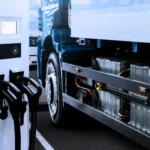Electric bicycles (e-bikes) have emerged as a revolutionary force in personal transportation, transforming how we commute and experience cycling. This comprehensive exploration aims to unravel the fundamental principles, key components, recent innovations, notable applications, and the transformative impact of e-bikes on sustainable mobility.
Understanding Electric Bicycles (E-Bikes)
Electric bicycles represent a fusion of traditional cycling with cutting-edge electric technology. At their core, e-bikes are conventional bicycles equipped with electric motors and batteries. This integration of electric power amplifies the rider’s pedaling efforts, providing a boost that enhances speed and facilitates longer journeys. E-bikes offer a green and efficient alternative to traditional transportation, bridging the gap between cycling and motorized vehicles.
Key Components of Electric Bicycles (E-Bikes)
The efficacy and performance of e-bikes rely on several key components working in harmony:
- Electric Motor: As the heart of an e-bike, the electric motor assists the rider’s pedaling efforts. These motors come in various sizes and placements, some integrated into the wheel’s hub while others are mounted on the frame.
- Battery: E-bikes are powered by rechargeable batteries, typically lithium-ion. These batteries store the energy needed to propel the electric motor. Advancements in battery technology continually improve efficiency and longevity, contributing to the overall sustainability of e-bikes.
- Controller: The controller acts as the conductor, regulating the flow of electric power from the battery to the motor. This component ensures a smooth and controlled assistance level, allowing riders to adjust power output through a user-friendly interface.
Recent Innovations in Electric Bicycles (E-Bikes)
Recent innovations have propelled e-bikes to new heights, addressing key challenges and enhancing the overall cycling experience:
Mid-Drive Motors
The integration of mid-drive motors stands out as a game-changer in e-bike design. Placed at the bike’s center, these motors provide a more balanced weight distribution and better leverage for climbing hills, offering a superior riding experience with improved efficiency and control.
Smart Connectivity
Electric Bicycles are increasingly equipped with smart connectivity features, ushering in a new era of user interaction. Through smartphone apps, riders can monitor battery life, control assistance levels, and even track their routes. This connectivity enhances the user experience and provides valuable data for maintenance and optimization.
Lightweight and Efficient Batteries
Advancements in battery technology have led to the development of lightweight and efficient batteries. These batteries extend the range of e-bikes while minimizing overall weight, contributing to improved performance and a more enjoyable riding experience.
Notable Applications of Electric Bicycles (E-Bikes)
Electric Bicycles transcend traditional cycling, finding applications in various sectors and enhancing the overall mobility landscape:
Commuting and Urban Transportation
Electric Bicycles have gained popularity as an eco-friendly and efficient mode of urban transportation. Offering a faster and sweat-free alternative to traditional bicycles, e-bikes make commuting more accessible and sustainable, reducing traffic congestion and improving air quality.
Tourism and Recreation
In tourist destinations, e-bikes provide an accessible and enjoyable way for visitors to explore scenic areas and historical sites. The electric assistance allows riders to cover longer distances easily, expanding the possibilities for recreational cycling and promoting sustainable tourism practices.
Last-Mile Delivery
The efficiency and maneuverability of e-bikes make them ideal for last-mile delivery services. Companies utilize e-bikes to navigate congested urban areas quickly, reducing delivery times and lowering the environmental impact of logistics, contributing to the overall sustainability of urban deliveries.
Health and Fitness
E-bikes have also found a place in the health and fitness realm. They cater to a diverse range of riders, including those looking for a low-impact exercise option or individuals with physical limitations. E-bikes promote an active and inclusive lifestyle, making cycling accessible to a broader demographic.
Challenges in Electric Bicycles (E-Bikes)
While e-bikes offer numerous benefits, several challenges impact their widespread adoption and integration into mainstream transportation:
Regulatory Frameworks
The lack of standardized regulations for e-bikes poses challenges in classification, speed limits, and access to bike lanes. Clear and consistent regulatory frameworks are essential to ensure the safe integration of e-bikes into existing cycling infrastructure, fostering a harmonious coexistence with traditional bicycles.
Perception and Acceptance
Changing perceptions and fostering acceptance of e-bikes among traditional cyclists and the general public is crucial. Education campaigns highlighting the environmental and health benefits can dispel myths and promote a more positive attitude toward e-bikes, encouraging their broader acceptance.
Infrastructure Support
Infrastructure support is vital to realize the full potential of e-bikes. It includes developing charging stations, dedicated parking spaces, and bike-friendly urban planning to accommodate the unique needs of e-bike users. A supportive infrastructure ensures the seamless integration of e-bikes into existing transportation networks.
Future Trends in Electric Bicycles (E-Bikes)
As technology continues to advance, the future of e-bikes promises exciting trends that will further redefine their capabilities and applications:
Integration of Artificial Intelligence
Integrating Artificial Intelligence (AI) into e-bike systems will enhance predictive analytics, optimizing power assistance based on rider behavior, terrain, and weather conditions. AI-driven systems will provide a more adaptive and efficient cycling experience, tailoring electric assistance to individual preferences and environmental factors.
Sustainable Materials and Design
Future e-bike designs may incorporate sustainable materials, reducing the environmental impact of manufacturing. Lightweight and durable materials and eco-friendly production processes contribute to a more sustainable cycling industry. This trend aligns with the archiving emphasis on eco-conscious choices in consumer products.
Collaborative Urban Planning
Collaborative efforts between urban planners and e-bike manufacturers will result in bike-friendly cities. It includes dedicated lanes, secure parking facilities, and charging infrastructure to promote the widespread use of e-bikes as a mainstream transportation option. Collaborative urban planning ensures that cities evolve to accommodate the unique needs of e-bike users, creating a more inclusive and sustainable urban environment.
Advanced Safety Features
Continued advancements in safety features, such as collision detection systems and enhanced visibility through integrated lighting, will make e-bike riding safer and more secure. These safety features aim to address concerns related to sharing roads with other vehicles and pedestrians, further establishing e-bikes as a safe and reliable mode of transportation.
Conclusion
With their blend of traditional cycling and electric technology, electric bicycles are transforming how we approach personal transportation. From enhancing urban commuting to providing accessible options for diverse riders, e-bikes represent a sustainable and efficient mode of travel. Despite existing challenges, ongoing innovations in motor technology, smart connectivity, and sustainable design signal a promising future for electric bicycles. As research and development continue to push the boundaries of what is possible, e-bikes are poised to become an integral part of a greener and more accessible transportation landscape, contributing to a more sustainable and enjoyable future of cycling.










